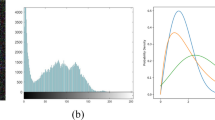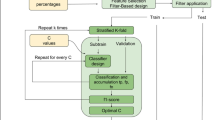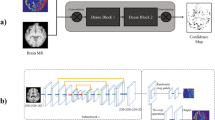Abstract
Alzheimer’s disease (AD) is considered to be one of the most fatal neurological disorders and is identified as significant tissue loss in the hippocampus region of human brain. This paper presents a fuzzy based novel segmentation algorithm for brain MRI images. A structuring element for opening of gray scale converted test MRI scans has been proposed in this regard. It effectively enhances the contrast of lateral ventricle region of brain which contains crucial information for mild cognitive impairment (MCI). Proposed rule-base of higher order fuzzy system dynamically chooses edge pixels and accordingly predicts the next probable edge pixel. Proposed fuzzy inference system is inspired by fuzzy connectedness algorithm and converts probable edge pixels into edge pixels depending on the intensity correlation between ordered pixels in support of rule-base and assembles it into an edge contour. Our proposition is finally tested over several ADNI brain images of different subject and orientation. Experimental results identify a promising improvement in detection of object boundaries and enhance contrast both qualitatively and quantitatively.

















Similar content being viewed by others
References
Abdou I, Pratt W (1979) Quantitative design and evaluation of enhancement/thresholding edge detectors. Proc IEEE 67(5):753–763
Ali ES, Tony W (2011) An ant-inspired algorithm for detection of edge features. Appl Soft Comput 11:4883–4893
Basu M (2002) Gaussian based edge detection methods: a survey. IEEE Trans Syst Man Cybern 32(3):252–260
Becerikli Y, Karan TM (2005) A new fuzzy approach for edge detection 2 detection of image edges, computational intelligence and bioinspired systems. Springer Verlag, Berlin, pp 943–951
Bovik AC (2009) The essential guide to image processing. Academic, New York, pp 498–500
Butkiewicz BS Fuzzy approach to correlation function, Warsaw University of Technology, Warsaw, Poland
Canny J (1986) A computational approach to edge detection. IEEE Trans Pattern Anal Mach Intell PAMI-8(6):679–698
Chandra A, Modal S (2017) Amalgamation of iterative double automated thresholding and morphological filtering: a new proposition in the early detection of cerebral aneurysm. Multimed Tools Appl Springer 76(22):23957–23979
Chen S, Chang Y, Pan J (2013) Fuzzy rules interpolation for sparse fuzzy rule-based systems based on interval type-2 Gaussian fuzzy sets and genetic algorithms. IEEE Trans Fuzzy Syst 21(3):412–425
Chen Y et al (2016) Curve-like structure extraction using minimal path propagation with backtracking. IEEE Trans Image Process 25(2):988–1003
Deng Y, Ren Z, Kong Y, Bao F, Dai Q (2017) A hierarchical fused fuzzy deep neural network for data classification. IEEE Trans Fuzzy Syst 25(4):1006–1012
Ferreira D et al (2017) Distinct subtypes of Alzheimer’s disease based on patterns of brain atrophy: longitudinal trajectories and clinical applications. Nat Sci Rep 7:46263. https://doi.org/10.1038/srep46263.
Fu W, Johnston M, Zhang M (2014) Low level feature extraction for edge detection using genetic programming. IEEE Trans Cybern 44:1459–1472
Gao W, Yang L, Zhang X, Liu H (2010) An improved Sobel edge detection. IEEE 3rd Int Conf Innov Comput Technol (ICICT) 5:67–71
Gonzalez RC, Woods RE Digital image processing, 3rd ed., Pearson India
Hsu C, Juang C (2013) Evolutionary robot wall-following control using type-2 fuzzy controller with species-DE-activated continuous ACO. IEEE Trans Fuzzy Syst 21(1):100–112
Kong Y, Deng Y, Dai Q (2015) Discriminative clustering and feature selection for brain MRI segmentation. IEEE Signal Process Lett 22(5):573–577
Li XJ, Yang GH (2013) Switching-type H∞filter design for T–S fuzzy systems with unknown or partially unknown membership functions. IEEE Trans Fuzzy Syst 21(2):385–392
Melin P et al (2014) Edge detection method for image processing based on generalized Type-2 fuzzy logic. IEEE Trans Fuzzy Syst 22:1515–1525
Molina CL, Bustince H, Fernandez J, Couto P, De Baets B (2010) A gravitational approach to edge detection based on triangular norms. Pattern Recogn 43:3730–3741
Noh Y et al (2014) Anatomical heterogeneity of Alzheimer disease: based on cortical thickness on MRIs. Neurology 83:1936–1944
Perona P, Malik J (1990) Scale-space and edge detection using anisotropic diffusion. IEEE Trans Pattern Anal Mach Intell 12(7):629–639
Prakash VO, Singh PA (2017) An optimal fuzzy system for edge detection in color images using bacterial foraging algorithm. IEEE Trans Fuzzy Syst 25:114–127
Prewitt JMS (1970) Object enhancement and extraction, Picture analysis and psychopictorics, B. S. Lipkin and A. Rosenfeld, Eds. New York, NY, USA: Academic, pp 75–149
Salinas RA, Richardson C, Abidi MA, Gonzalez RC (1996) Data fusion: color edge detection and surface reconstruction through regularization. IEEE Trans Ind Electron 43(3):355–363
Setayesh M, Zhang M, Johnston M (2012) Effects of static and dynamic topologies in particle swarm optimization for edge detection in noisy images. Proc IEEE Congr Evol Comput pp 1–8
Setayesh M, Zhang M, Johnston M (2013) A novel particle swarm optimization approach to detecting continuous, thin and smooth edges in noisy images. Inf Sci 246:28–51
Shannon CE (1948) A mathematical theory of communications. Bell Syst Tech J 27:379–423
Sun G, Liu Q, Liu Q, Ji C, Li X (2007) A novel approach for edge detection based on the theory of universal gravity. Pattern Recogn 40:2766–2775
Torre V, Poggio TA (1986) On edge detection. IEEE Trans Pattern Anal Mach Intell PAMI-8(6):147–163
Udupa JK, Samarasekera S (1996) Fuzzy connectedness and object definition: theory, algorithms and applications in image segmentation. Graph Model Image Process 58(3):246–261
Zhi** C et al (2017) The research and application of improved ant colony algorithm with multi-thresholds in edge detection, International conference on Industrial Informatics - Computing Technology, Intelligent Technology, Industrial Information Integration (ICIICII), pp 5–9
Zhou H, Ying H (2013) A method for deriving the analytical structure of a broad class of typical interval type-2 Mamdani fuzzy controllers. IEEE Trans Fuzzy Syst 21(3):447–458
Acknowledgements
Authors would like to thank Visvesvaraya PhD Scheme for Electronics & IT under Ministry of Electronics and Information Technology, Government of India for extending necessary financial support to carry out this research work. We thank radiologist Dr. Tapan K. Biswas for providing public large scale brain MRI data set as a part of this research work.
Author information
Authors and Affiliations
Corresponding author
Additional information
Publisher’s Note
Springer Nature remains neutral with regard to jurisdictional claims in published maps and institutional affiliations.
Rights and permissions
About this article
Cite this article
Ghosh, S., Chandra, A. & Mudi, R.K. A novel fuzzy pixel intensity correlation based segmentation algorithm for early detection of Alzheimer’s disease. Multimed Tools Appl 78, 12465–12489 (2019). https://doi.org/10.1007/s11042-018-6773-z
Received:
Revised:
Accepted:
Published:
Issue Date:
DOI: https://doi.org/10.1007/s11042-018-6773-z




